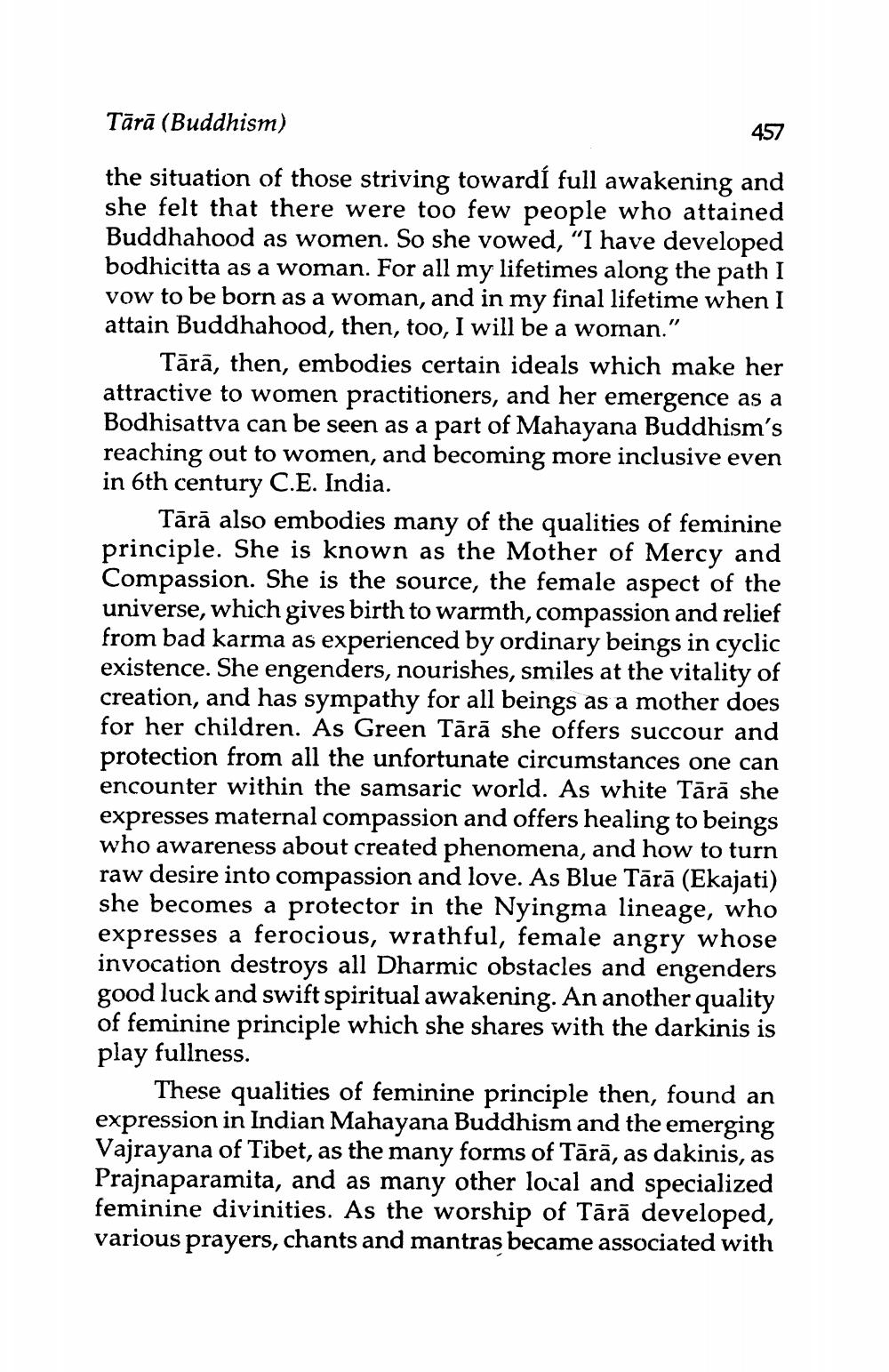________________
Tārā (Buddhism)
457
the situation of those striving towardĺ full awakening and she felt that there were too few people who attained Buddhahood as women. So she vowed, "I have developed bodhicitta as a woman. For all my lifetimes along the path I vow to be born as a woman, and in my final lifetime when I attain Buddhahood, then, too, I will be a woman."
Tārā, then, embodies certain ideals which make her attractive to women practitioners, and her emergence as a Bodhisattva can be seen as a part of Mahayana Buddhism's reaching out to women, and becoming more inclusive even in 6th century C.E. India.
Tārā also embodies many of the qualities of feminine principle. She is known as the Mother of Mercy and Compassion. She is the source, the female aspect of the universe, which gives birth to warmth, compassion and relief from bad karma as experienced by ordinary beings in cyclic existence. She engenders, nourishes, smiles at the vitality of creation, and has sympathy for all beings as a mother does for her children. As Green Tārā she offers succour and protection from all the unfortunate circumstances one can encounter within the samsaric world. As white Tārā she expresses maternal compassion and offers healing to beings who awareness about created phenomena, and how to turn raw desire into compassion and love. As Blue Tārā (Ekajati) she becomes a protector in the Nyingma lineage, who expresses a ferocious, wrathful, female angry whose invocation destroys all Dharmic obstacles and engenders good luck and swift spiritual awakening. An another quality of feminine principle which she shares with the darkinis is play fullness.
These qualities of feminine principle then, found an expression in Indian Mahayana Buddhism and the emerging Vajrayana of Tibet, as the many forms of Tārā, as dakinis, as Prajnaparamita, and as many other local and specialized feminine divinities. As the worship of Tārā developed, various prayers, chants and mantras became associated with




